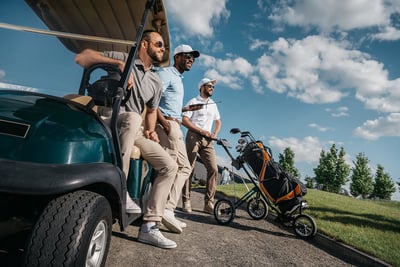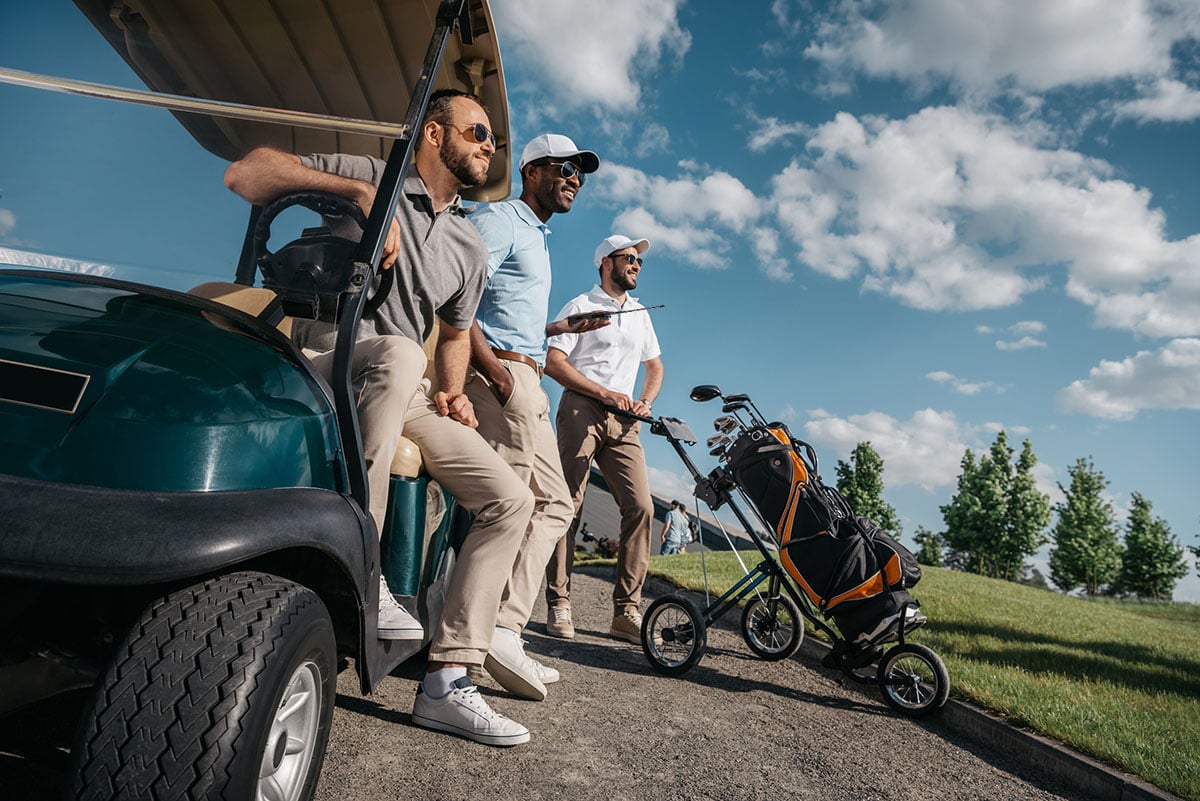 Most golf outings provide a chance for golfers to connect with the ball, with nature, and with each other. The goal is to relax and unwind from the stresses of the workweek, right?
Most golf outings provide a chance for golfers to connect with the ball, with nature, and with each other. The goal is to relax and unwind from the stresses of the workweek, right?
Part of what makes golf relaxing is the competent and invisible work of the folks who keep the courses running smoothly.
Accidents and injuries do happen on golf courses, and when they do, golf course staff need to be able to communicate across departments and over large distances to make sure that everyone gets the help they need as soon as they need it.
Here are some things I learned when helping Glendale Lakes Golf Club optimize its communication with two‑way radios.
Going the Distance
Glendale Lakes Golf Club is an 18‑hole public golf course in DuPage County. It’s right in the middle of the northern and southern suburbs. In addition to its attractive, expansive golf course, the club hosts many charity events like Spring Fling, Summer Scramble, and Turkey Shoot. They also rent out the facilities for special events and weddings. Glendale Lakes is also the home course for 5 local high school golf teams.
That’s a lot of people, and a lot of acres to cover.
When we started talking about communications technology, it was clear that their two‑way radios weren’t up for the task. Signals were dropping, and there were lots of dead spots around the golf course. We did a bunch of testing to see if it was batteries or antennas. But ultimately, we figured out that their technology was not keeping up with the changes. The course had changed, trees had grown, and that left them with dead spots where the signal wouldn’t reach.
In this situation, the solution was fairly straightforward: They needed stronger radios.
And they needed to switch from analog to digital.
Digital for Clarity
Glendale Lakes Golf Club ended up purchasing a package that included Motorola CP100d two‑way radios. These radios are able to operate in analog or digital modes. Their coverage challenges meant that digital radios were a better choice for keeping them connected across their tree‑covered course.
Going digital gives them more options to build their system in the future. For example, they may opt to add a repeater or integrate their channels with the Village of Glendale. But for now, radio‑to‑radio communication is working much better.
Their audio is much clearer, the signal is stronger, and it can reach a lot farther. With the old analog radios, it was getting staticky and dropping out.
Now all the people who help the place run smoothly are able to stay in touch without wondering what’s happening out there on the course.
Instant Communication
The building and grounds personnel are able to instantly connect with the office and the pro shop. Someone can get right out there if a golf cart dies out on the course.
If some part of the course is damaged or vandalized, someone will be able to respond more quickly.
And, of course, they can connect with medical personnel for a safer golfing experience.
Golf Course Injuries—More Common Than You Think
GolfSupport did an analysis of a National Health Statistics Report from the Centers for Disease Control (CDC) and found that golf and other leisure sports are more dangerous than rugby, hockey, and other team sports. Most of those injuries are to elbows, shoulders, and wrists. And the most common injury seems to be lower back injuries, which account for up to 34% of sports‑related injuries.
Here are a few other interesting facts on golf course injuries:
- Injuries among amateur golfers are increasing up to 40.9% each year.
- Golf carts are responsible for as many as 15,000 injuries each year.
- 9 golfers died from lightning strikes between 2006 and 2016.
That doesn’t mean people should not golf. But it does mean that golf courses need to have a good system in place for communication.
And when all those charity events are happening, the managers of the course can guarantee the safety and security of the club and grounds.
It’s not just good customer service; it’s a matter of safety.



